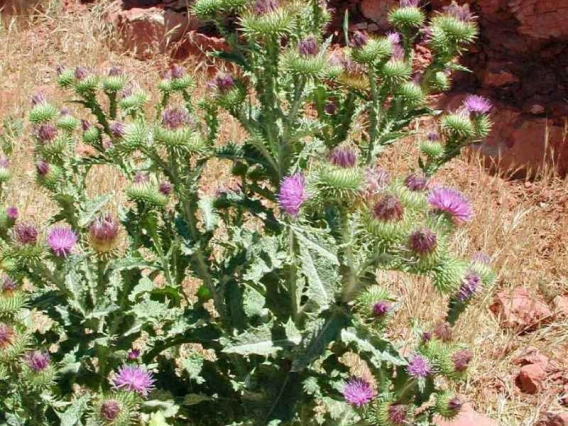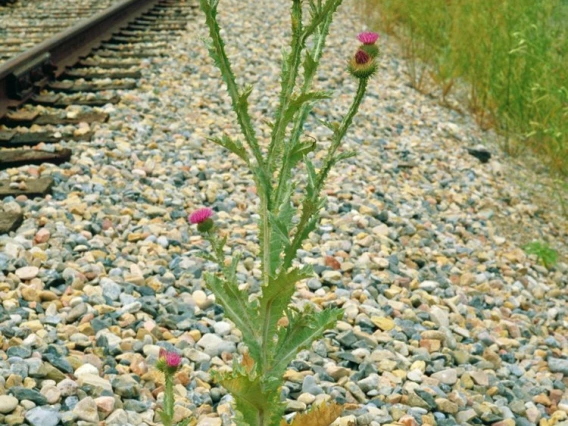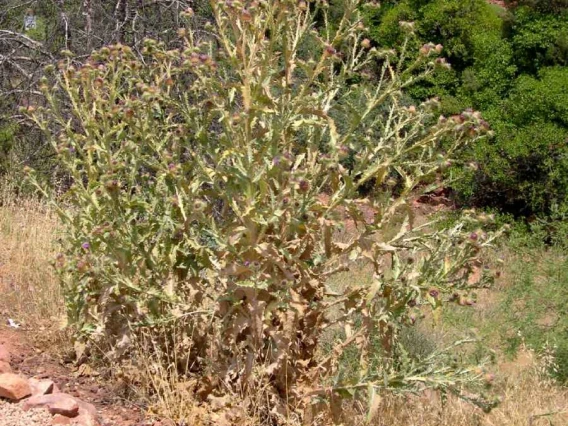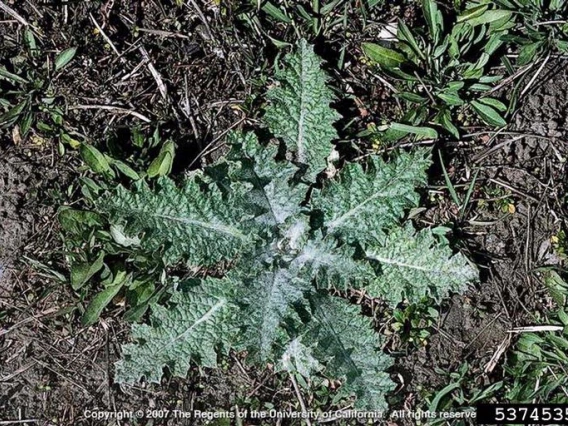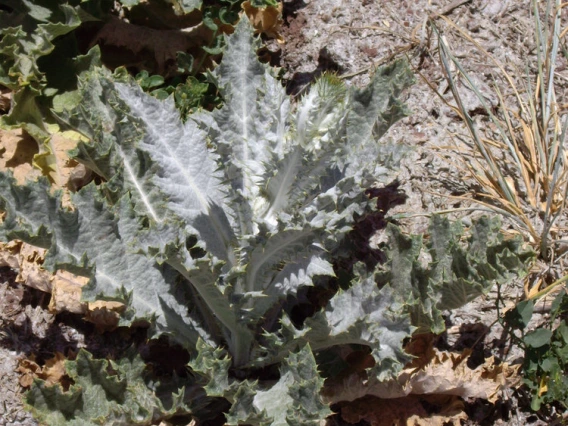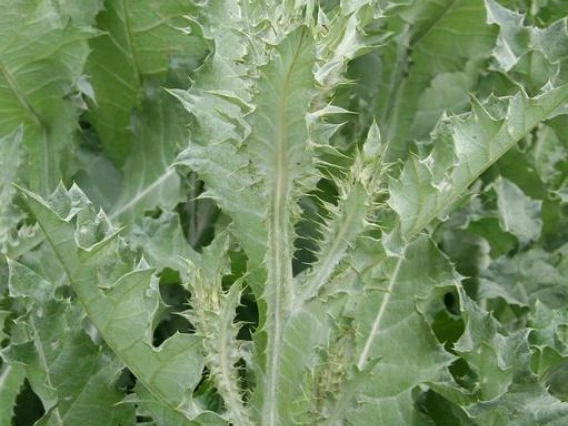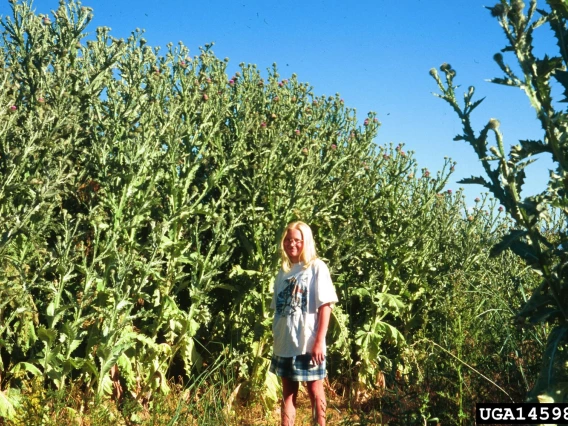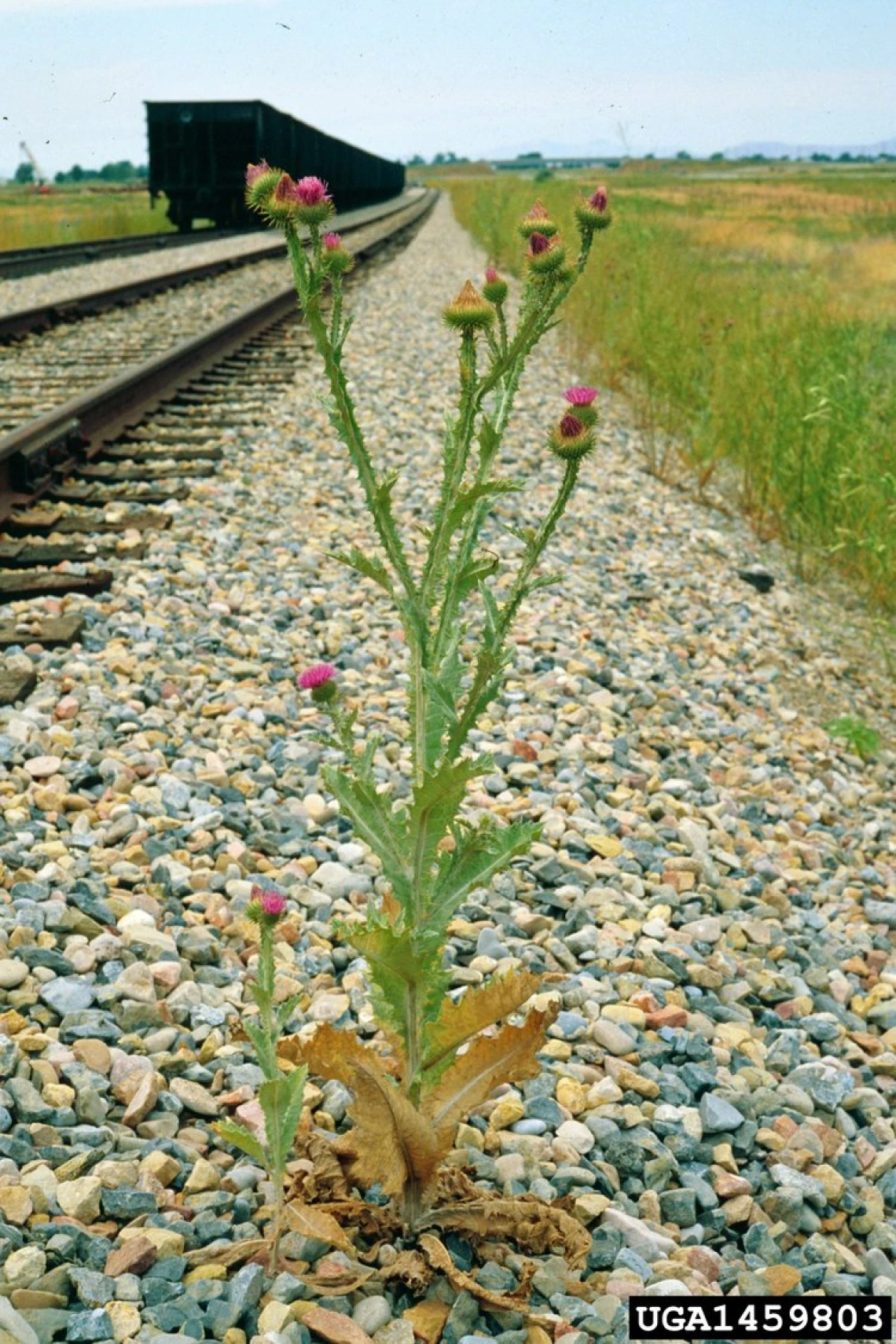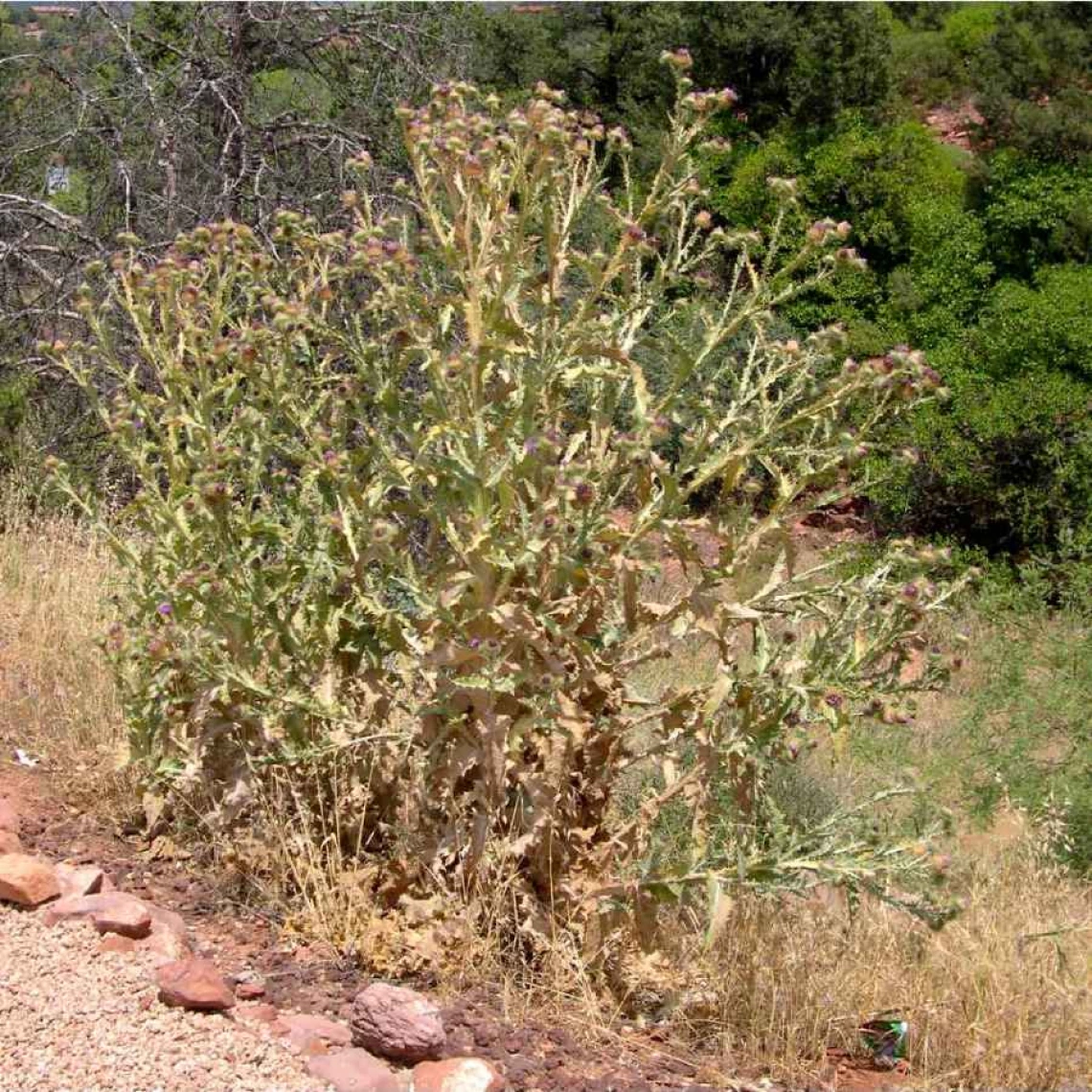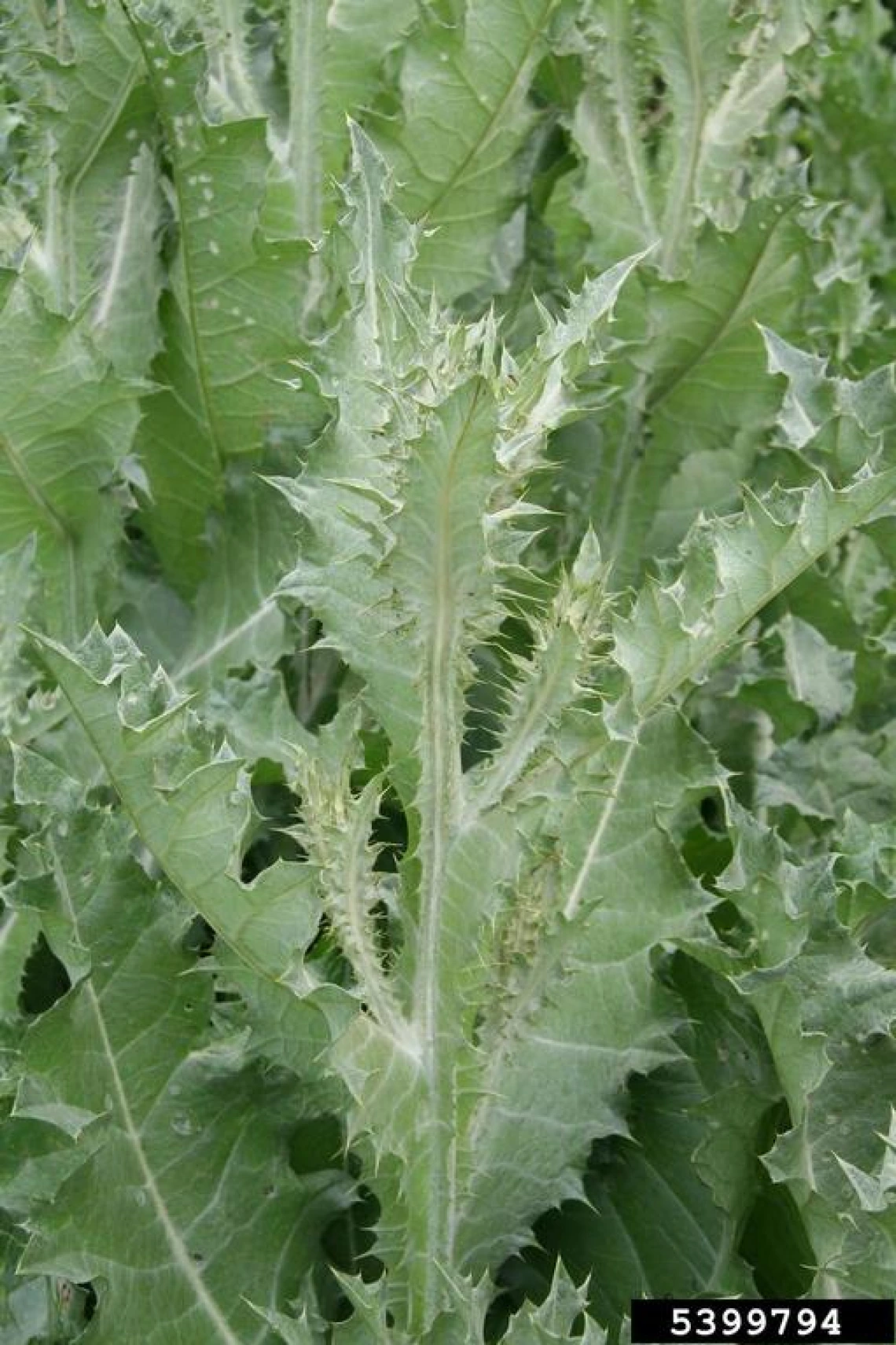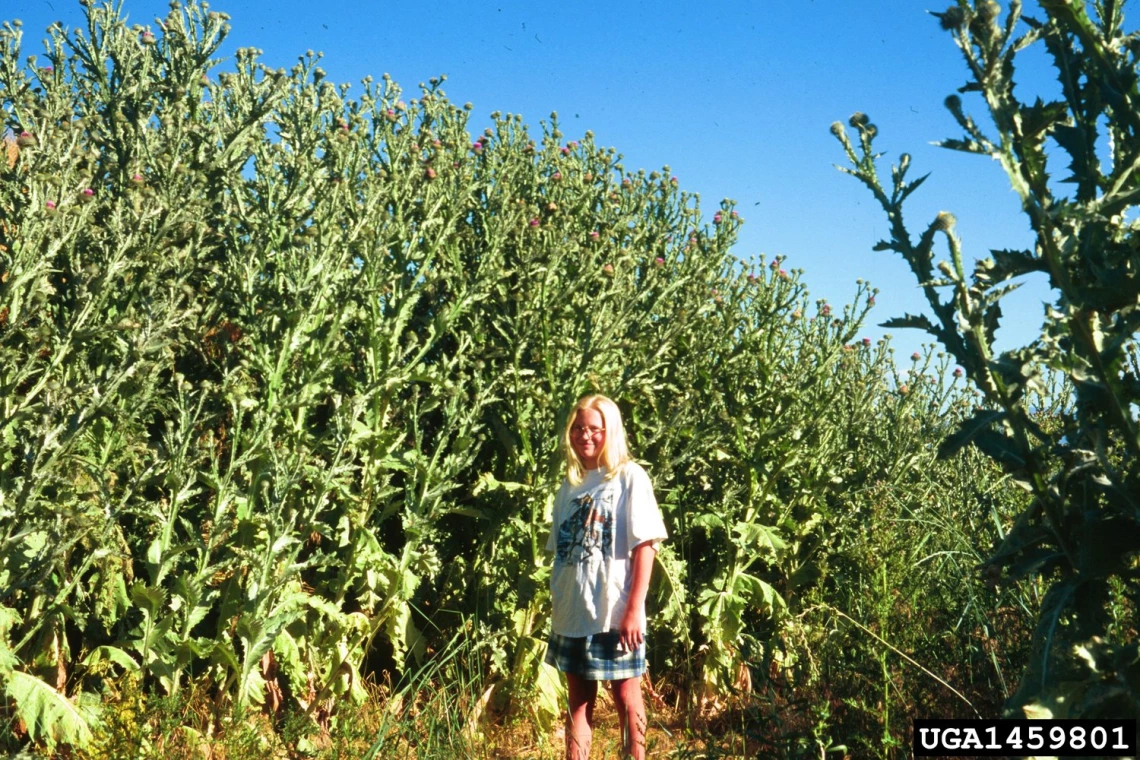Image
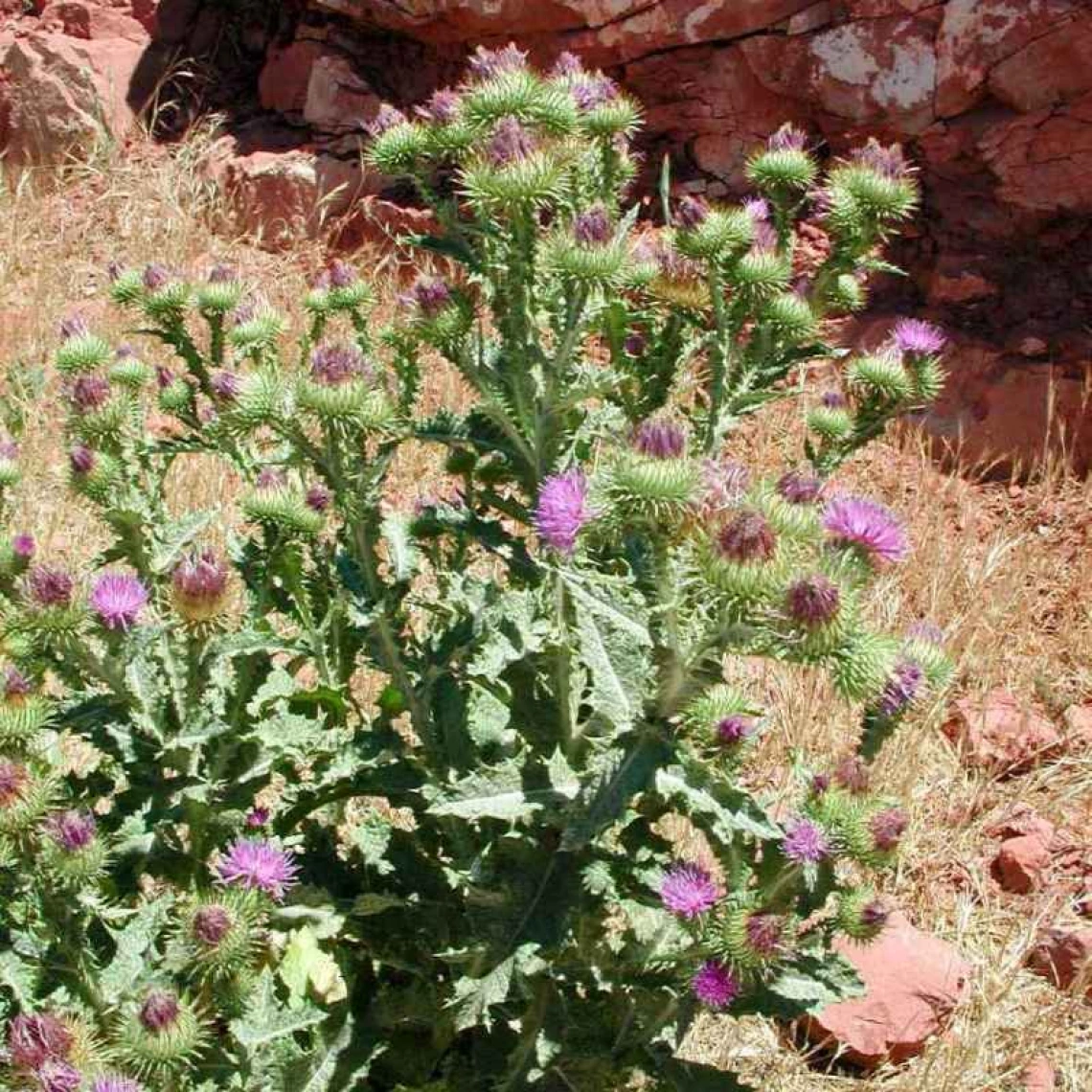
Scotch thistle habit
Max Licher, swbiodiversity.org/seinet
Common Name(s)
Scotch thistle
Scientific Name
Onopordum acanthium
Family
Sunflower or Aster family (Asteraceae)
Reasons for concern
This aggressive plant can quickly take over both disturbed and unattended areas, outcompeting native species, reducing native plant diversity and wildlife habitat, and forming huge monocultures. It is very difficult to eradicate.
Classification
Non-native. Categorized as a Class B noxious plant on the Arizona Noxious Weed list, meaning that it “may be a high priority pest for quarantine, control, or mitigation if a significant threat to a crop, commodity, or habitat is known to exist.”
Botanical description
Tall, sturdy, spiny plant with branching stems.
Leaves
Rosettes can be very large, with leaves 2 feet long and 1 foot wide, or more. In second year, large leaves alternate on stem, have triangular lobes and are grayish-green. Mid-vein prominent, covered with fine dense hairs on both sides. Stem leaves have white woolly covering, alternate, spinyedged forming wings around stalk. Dense mat of hairs gives plant a gray color.
Stem(s)
Stem has very spiny wings extending down stem from each leaf. Stem stout, erect, green but covered with white wooly covering, many spreading branches. Stem up to 2 to 12 feet or more.
Flowers
Reddish purple to pink. Heads in clusters of 2 or 3 at end of branches. Flower heads supported by modified leaves below flower head called bracts, which have flat, pale, orange-colored spines. Blooms June through September.
Seeds
Seed heads topped by plume of feathery white hairs.
Roots
Stout taproot.
Native to
Europe and Asia
Where it grows
Found in natural areas, occasionally forests, disturbed sites, roadsides, wet meadows, pastures, and along streams at elevations 3,000 to 10,000 feet. Likes sun.
Lifecycle
Mostly biennial or short-lived perennial
Reproduction
By seed
Weedy Characteristics
Scotch thistle is highly competitive and aggressive, and forms dense colonies that can choke out native vegetation. Each plant produces 70 to 300 flowers and up to 40,000 seeds annually. 80% to 90% of seeds remain viable for five years and they are spread far and wide by water, wind, wildlife, and human activity.
Look-alike Plants
Image
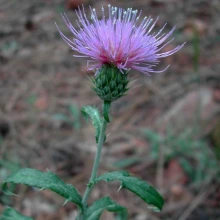
Wheeler thistle
Max Licher, swbiodiversity.org/seinet
Many native thistles look similar to Scotch thistle. The most commonly found is the native Wheeler’s thistle (Cirsium wheeleri) which also has purple flowers. Wheeler’s thistle plants are shorter and smaller with more delicate stems and rosettes. The stems lack Scotch thistle’s spiny wings and can be easily touched.
Control Strategies
Remove them in rosette stage in the first year. In the second year, do not let them go to flower or seed. To prevent resprouting, cut taproot about 2 to 3 inches below soil surface, while disturbing soil as little as possible. Bag all buds, flowers and seeds. Always use gloves. Repeatedly monitor previous infestations for new growth. Plant desirable native species to outcompete invasives. Chemical control can be effective on rosettes. Contact your local county extension office for more information on chemical control.
References
- Weed of the Week: Scotch Thistle (video) Coconino County Extension
- Scotch Thistle Noxious Weed Control Board, Washington State
- Scotch Thistle: Options for Control Lincoln County Noxious Weed Control Board
- Scotch Thistle A weed report from the book Weed Control in Natural Areas in the Southwestern United States, 2013, DiTomaso, J.M., G.B. Kyser et al. Weed Research and Information Center, University of California

